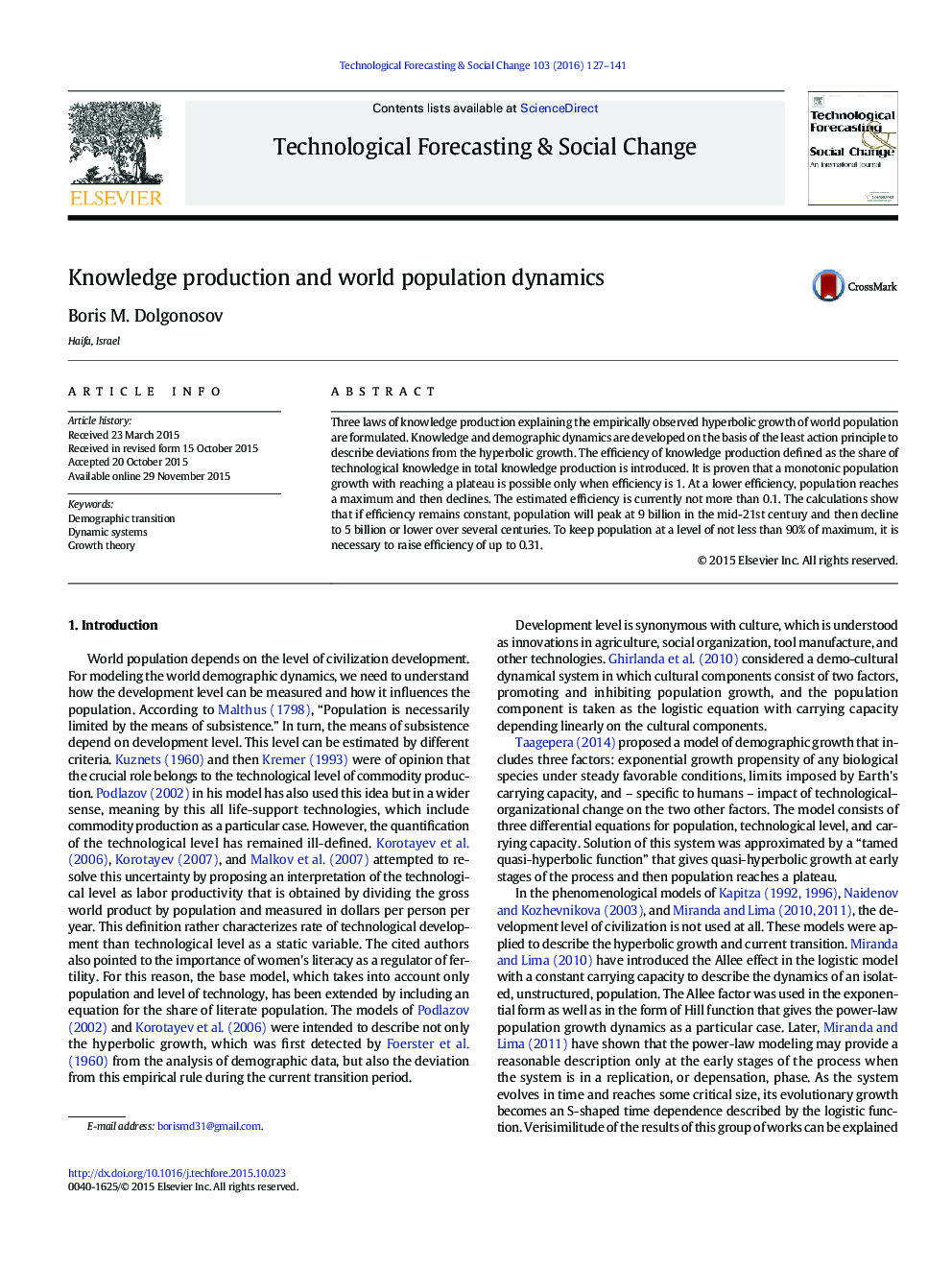| کد مقاله | کد نشریه | سال انتشار | مقاله انگلیسی | نسخه تمام متن |
|---|---|---|---|---|
| 7256192 | 1472397 | 2016 | 15 صفحه PDF | دانلود رایگان |
عنوان انگلیسی مقاله ISI
Knowledge production and world population dynamics
ترجمه فارسی عنوان
تولید دانش و دینامیک جمعیت جهان
دانلود مقاله + سفارش ترجمه
دانلود مقاله ISI انگلیسی
رایگان برای ایرانیان
کلمات کلیدی
انتقال دموگرافیک، سیستم های پویا، نظریه رشد،
ترجمه چکیده
سه قانون تولید دانش که توضیح می دهد رشد هیپربولیک جمعیتی جمعیت تجربی نشان داده شده است. دانش و پویایی جمعیت شناسی بر اساس اصل کمترین اقدام برای توصیف انحراف از رشد هذلولی است. بهره وری از تولید دانش تعریف شده به عنوان سهم دانش فنی در تولید دانش کامل معرفی شده است. اثبات شده است که رشد جمعیت مونوتنیک با رسیدن به فلات ممکن است تنها زمانی است که بازدهی 1 باشد. در بهره وری پایین، جمعیت به حداکثر رسیده و سپس کاهش می یابد. بازده تخمینی در حال حاضر بیش از 0.1 نیست. محاسبات نشان می دهد که اگر کارایی ثابت باقی بماند، جمعیت در اواسط قرن 21 میلادی به 9 میلیارد نفر می رسد و در طی چندین قرن به 5 میلیارد یا کمتر می رسد. برای حفظ جمعیت در سطح حداقل 90٪ از حداکثر، لازم است تا بهره وری تا 0.31 افزایش یابد.
موضوعات مرتبط
علوم انسانی و اجتماعی
مدیریت، کسب و کار و حسابداری
کسب و کار و مدیریت بین المللی
چکیده انگلیسی
Three laws of knowledge production explaining the empirically observed hyperbolic growth of world population are formulated. Knowledge and demographic dynamics are developed on the basis of the least action principle to describe deviations from the hyperbolic growth. The efficiency of knowledge production defined as the share of technological knowledge in total knowledge production is introduced. It is proven that a monotonic population growth with reaching a plateau is possible only when efficiency is 1. At a lower efficiency, population reaches a maximum and then declines. The estimated efficiency is currently not more than 0.1. The calculations show that if efficiency remains constant, population will peak at 9 billion in the mid-21st century and then decline to 5 billion or lower over several centuries. To keep population at a level of not less than 90% of maximum, it is necessary to raise efficiency of up to 0.31.
ناشر
Database: Elsevier - ScienceDirect (ساینس دایرکت)
Journal: Technological Forecasting and Social Change - Volume 103, February 2016, Pages 127-141
Journal: Technological Forecasting and Social Change - Volume 103, February 2016, Pages 127-141
نویسندگان
Boris M. Dolgonosov,
